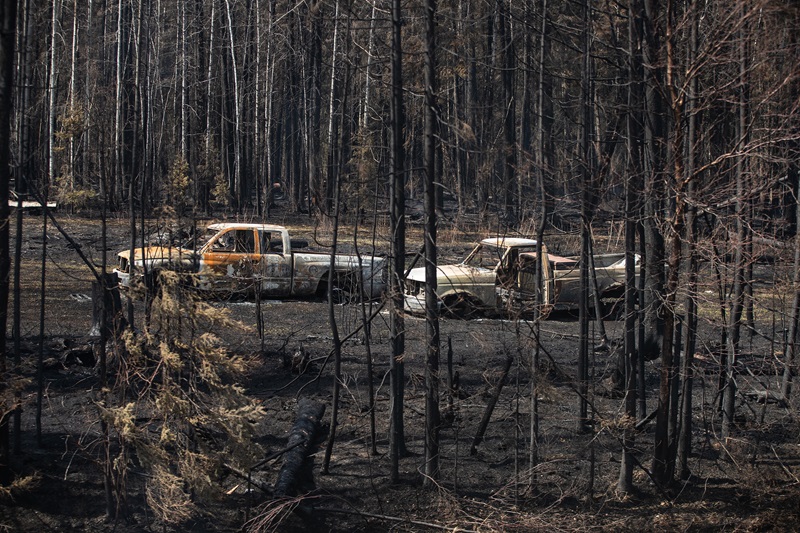Wildfires in Alberta burned 10 times more area in 2023 than the five-year average

Alberta Wildfire says it saw an average number of wildfires last year, but the area burned across the province set a record.
The province saw a total of 1,088 wildfires that burned about 22,000 square kilometres from March 1 to Oct. 31. The five-year average for area burned is 2,262 square kilometres.
Melissa Story, community relations co-ordinator for the wildfire management branch in Alberta Forestry and Parks, said 2023 was a record-breaking year.
“The number of wildfires that we responded to last year was average – but the number of hectares burned tells a very different story,” she said in an interview.
More than 60 per cent of wildfires were caused by people, while four per cent are still being investigated.
Story said the other 35 per cent of the wildfires were caused by lightning.
Wildfires caused by lightning accounted for 17,500 square kilometres – or 80 per cent of the total that burned in Alberta last year.
Mike Flannigan, a professor of wildland fire at Thompson Rivers University in Kamloops, B.C., said it was an unprecedented year across the country, including in Alberta.
“The previous record (for area burned) was 1981 and it was about 1.3 million hectares (13,000 square kilometres), so it was quite a record-smashing year,” he said in an interview.
Related: Losses adjusters don’t want to see from Alberta wildfires
Flannigan said there are several reasons for the record year across Western Canada, which was either dry or in a drought when spring started in 2023. Then there was a record heat wave, he said.
“It was not just Alberta, but it was northeastern British Columbia and southern Northwest Territories,” he said.
“So, the snow’s gone, everything is crispy and we get some wind events and ignition and away we go. Hot, dry, windy, we call it. We call them spread days – that’s where fire spreads actively – and we had a lot of them (last year) in Alberta.”
Flannigan said Alberta often gets wildfires in May, but it typically gets rain in June and that didn’t happen in 2023.
“Fires continued to burn through June, July, August, September, even into October,” he said. “As a matter of fact, there are still 60-some fires on the books right now and we’re in January.
“The fact that there’s (61 fires) on the books is just crazy and it’s because it’s so dry.”
Flannigan said Alberta tends to see a bad fire season every three to five years, but should expect to see more because of climate change.
“We are seeing it,” he said. “The record-smashing year in Alberta, British Columbia, Northwest Territories, Quebec, Nova Scotia was off the charts.”
There are three reasons, he added, for more wildfires in a warmer world.
“The warmer it is, the longer the fire season,” said Flannigan. “Second, the warmer we get, the more lightning we see. The more lightning we see, the more likely we are to see lightning-caused fires.
“The third reason is the most important. As we warm, the atmosphere’s ability to suck moisture out of the fuel increases almost exponentially. So, unless we see increasing precipitation with these warmer temperatures, we are going to see drier fuel.
“The drier the fuel, the easier it is for a fire to start, the easier it is for a fire to spread.”
Flannigan said the dry conditions raise a similar concern going into this year’s fire season, which officially starts in Alberta on March 1.
“There’s a potential for a very active 2024 fire season, especially in the spring, but no one has a crystal ball,” he said.
“Given the way things are, I’d be prepared for a very active fire season.”
Feature image: Burnt out trucks from a wildfire sit on a property near Drayton Valley, Alta., Wednesday, May 10, 2023. Alberta Wildfire says it saw an average number of wildfires last year, but the area burned across the province set a record. THE CANADIAN PRESS/Jason Franson







